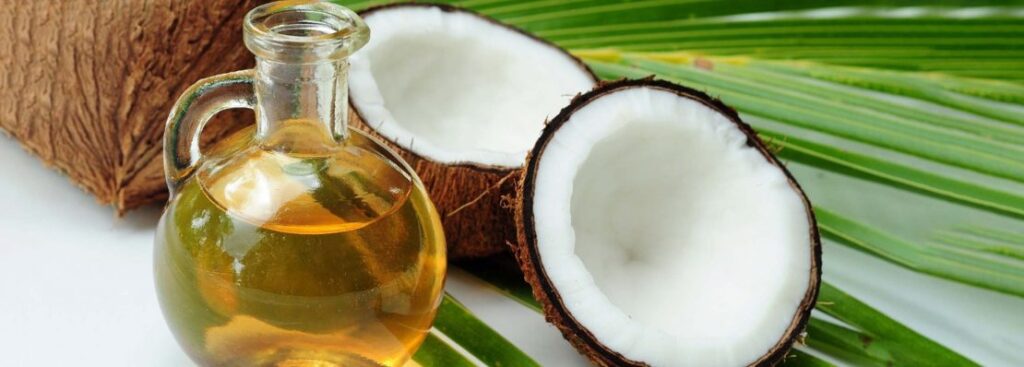Coconut palms can be found in the coastal areas of India. The dried kernel of coconut is called copra. This is an industrial term. Copra is the major commercial product of coconut. Copra normally has an oil content varying from 65 to 72 percent. There is another term is ‘virgin coconut oil.’ The extracted from the fresh coconut (not from copra) is called virgin coconut oil. There is another type of coconut oil, named RBD coconut oils. RBD stands for refined, bleached, deodorized. The “bleaching” is generally not a chemical process, but rather a filter process to remove impurities. A “bleaching clay” is used for this filtering. Here in this article, We intend to explore how to start coconut oil manufacturing business from copra.
COCONUT OIL MANUFACTURING – MARKET POTENTIAL
Coconut oil is an important cooking medium in Southern parts of the country, especially in Kerala and Karnataka State. Besides, the oil has varied industrial applications. It is used in the manufacture of toilet soaps, laundry soaps, surface active agents and detergents, hair tonics,hair oil, massage oil, cosmetics, etc. Growing in tropical locations coconut has the global market opportunity. The main consumer of coconut products, particularly coconut oil and copra, remains to be the United States. In the European Union member countries, the Netherlands serves as a main port for the importation of these products, which are then distributed to other countries. Refined coconut oil enjoys high demand in France and Germany, with its diverse applications in the cosmetics industry. Thus, we can say, coconut oil manufacturing is a profitable business opportunity for the new entrepreneurs.
COCONUT OIL MANUFACTURING BASIC CRITERIA
1. First, identify whether you have an easy raw material sourcing system or not. At the plant location, you must have plenty of raw material to get the viability of the project.
2. A small-scale coconut oil manufacturing plant demands at least 1000 SqFt of covered shade and 3000 SqFt of land area to get operated.
3. you must have a business plan or project report in hand before initiating. a project report clearly demonstrates the manufacturing technology, machinery requirement, fixed capital investment and working capital requirement.
4. You must arrange the required utilities in the plant like electricity and water.
COCONUT OIL MANUFACTURING BUSINESS REGISTRATION & LICENSE
1. Register your firm with ROC according to the ownership and liability pattern
2. Apply for Trade License from local authority
3. Obtain Udyog Aadhaar MSME registration. You can apply online.
4. Obtain VAT registration in your state.
5. FSSAI registration is must to sell coconut oils as cooking oil.
6. For large scale operation, Factory License is the must.
7. Apply for BIS Certification. For the different application of coconut oil, there are different quality standards you must maintain. Such as IS 11470 (1985): Coconut Oil for Cosmetic Industry
MACHINES & RAW MATERIAL FOR COCONUT OIL MANUFACTURING
The requirement of machines generally depends on the different aspects. Such as manufacturing process, the raw material used, the specification of the desired output and investment capacity of the owner. Here we have listed some of the common machines required for coconut oil manufacturing.
1. Copra Cutter
2. Bucket elevator
3. Steam jacketed kettle
4. Oil expeller
5. Screw conveyor
6. Crude coconut oil storage tanks
7. Filter press
8. Microfilter
9. Filtered oil storage tanks
10. Volumetric filling machine
11. Baby boiler
12. Wooden storage drums
Well-dried copra with a moisture content not exceeding 6 percent is considered as the ideal raw material for coconut oil manufacturing. The quality of copra is related to the quality of coconut oil.
COCONUT OIL MANUFACTURING PROCESS
Step 1
Dried copra cut into small chips in a copra cutter.
Step 2
The chips are fed into steam-jacketed kettles and cooked. It cooked mildly at a temperature of 70oC for 30 minutes.
Step 3
After proper cooking, the cooked material is fed into the expeller continuously and pressed twice. The combined oil from the first and the second pressing is collected in a tank provided separately.
Step 4
This oil is filtered by means of a filter press and stored in MS tanks.
Step 5
Bulk packaging is generally done in tin containers. HDPE containers and polymeric nylon barrier pouches are used for small consumer packings.
You will find oil cake as by- product. the product has a ready market as a cattle feed and in the manufacture of mixed cattle feeds. You can use the product as the raw material of coconut oil manufacturing for the extraction of remaining oil by solvent extraction method.


Comments are closed